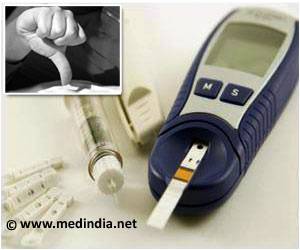A combination of modifiable risk factors have been identified that are responsible for increasing the rate of diabetes in blacks in their midlife.

‘Individuals with diabetes need to have healthy foods, safe spaces for regular physical activity and equal economic opportunity to eliminate the higher rate of diabetes.’





"Obesity is driving these differences," said senior study author Mercedes Carnethon, associate professor of preventive medicine at Northwestern University Feinberg School of Medicine. "The findings surprised us, because for the past 20 years there was a narrative that there must be something we haven't found that was causing this higher rate."Previous studies have found higher rates of diabetes in blacks are still present even when risk factors for diabetes such as obesity and lower socioeconomic status are taken into account.
But this study, for the first time, identified a combination of modifiable risk factors over time -- body mass index, fat around the abdomen, fasting glucose levels, lipids, blood pressure and lung function -- that drive the higher rate of diabetes. When all of these were factored out, there were no disparities between black and white men or women.
Before the authors accounted for the differences in risk factors, black women had nearly three times the risk for developing diabetes as white women. The study was published in the journal JAMA.
"Blacks gained more weight over time," Carnethon said. "It was the accumulation of this and other risk factors that eliminated the so-called mysterious cause of the disparity."
Advertisement
The Northwestern study measured these changes in her weight over time, along with changes in other related health behaviors and health risk factors. When scientists accounted for these changes in risk factors for diabetes, they did not observe race differences in the development of diabetes.
Advertisement
There is no easy fix for the problem, which is driven by a combination of biological, neighborhood, psychosocial, socioeconomic and behavioral factors, the authors said.
"To eliminate the higher rate of diabetes, everybody needs to have access to healthy foods, safe spaces for physical activity and equal economic opportunity to have enough money to afford these things and live in communities that offer this," said lead study author Michael Bancks, a postdoctoral fellow in preventive medicine at Feinberg.
Changing risk behaviors in childhood and adolescence is key because that's when risky health behaviors develop and damage begins to accumulate, Bancks said.
The research is part of the observational cohort Coronary Artery Risk Development in Young Adults (CARDIA) Study. CARDIA was started in 1985-1986, enrolling 5,115 black and white men and women who were 18 to 30 years of age from Birmingham, Alabama; Oakland, California; Minneapolis and Chicago.
The Northwestern study sample included 4,251 individuals from the original study. Individuals were followed through 2015 to 2016 for the development of diabetes, which was assessed at eight follow-up examinations over these 30 years using standard diagnostic criteria for diabetes.
"If we could wave a magic wand and get rid of risk factors, then we could eliminate the disparity," Carnethon said. "But we can't do that. Still, we now know there is no mystery to these higher rates. Our efforts to control the traditional risk factors can work to reduce the disparities we observe in diabetes incidence."
Source-Eurekalert















